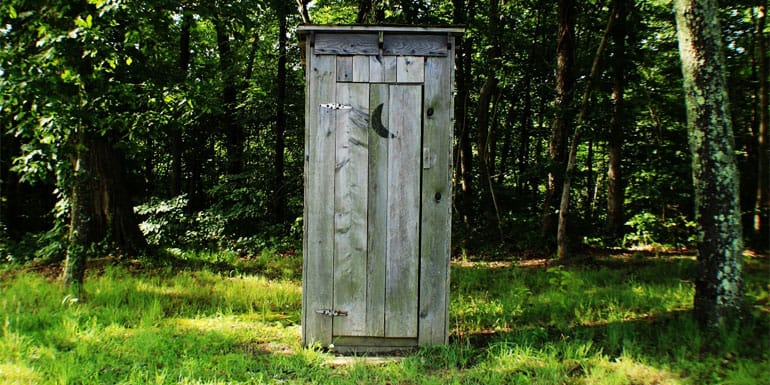I don’t know if any of you have watched the nerdy science show that takes a theory, and uses science to prove if it is correct or incorrect. Myth or Truth, that is the question!
Well, in a much simpler way, we are going to shatter some common myths about the pelvic floor.
But first, let’s get something pefectly clear…
What the Heck is a Pelvic Floor?
The pelvic floor or pelvic diaphragm is a set of muscles at the base of the abdomen that attach to the pelvis. They form a “hammock-like” support system to the pelvic and urinary organs. In a male, these pelvic organs are the bowel and bladder. In a female, these are the bladder, bowel, and uterus. A pelvic floor dysfunction involves the inability to control the muscles and ligaments of your pelvic floor.

Symptoms of Pelvic Floor Dysfunction Can Include:
- Bowel issues such as feeling of increased frequency during short period of time
- Bowel issues such as feeling you cannot complete a bowel movement
- Constipation or straining pain with bowel movements
- Feeling like all your parts are going to fall out or they actually bulge out (organ prolapse=bladder, uterus, or rectum bulge or fall or drop into a place where they do not belong)
- Frequent need to urinate or incontinence
- Painful urination
- You urinate but have trouble getting it started, it may stop and start, or you retain the urine
- Tailbone and low back pain
- Pain with sexual intercourse
OK, now that we know what a pelvic floor is and what a pelvic floor dysfunction may look like… let’s get busting some myths!
Myth #1 – You are old, so you are going to have to live with this.
Many doctors will say this to their patients without having the whole picture. They don’t really know what is wrong with you, so they use this line instead of looking for an answer to your problem. This makes my blood boil-this is not true whether you are 30 or 300 years old! If you have organ prolapse…this can be helped and can be improved with proper pelvic floor physical thearpy treatment. In other words, this doesn’t have to be something you deal with just because you are “getting older”.
Myth #2 – Everyone who have had kids have urinary leakage.
Not true! Childbirth is a trauma to the system, even if it was a smooth and easy labor and delivery. Childbirth and/or just pregnancy can cause increased urinary leakage and incontinence and this needs to be dealt with right away. Trained pelvic floor therapists can work postural alignment, scar tissue releases, and even muscle rehabilitation (whether they are weak, tight, or not activated).
Myth #3 – You need surgery or medication to fix this
UGH!!!! Surgery works, but sometimes only for 1-3 years, and then what?? Surgery may also add to the issues you already have and worsen the situation. Medication for urinary symptoms, pelvic pain, or even bowel issues have some nasty side effects that again will add to your problem list versus looking at the root of the problem. With pelvic floor PT, you can get your pelvis in a neutral position , and decrease the stress on your bladder-this changes your symptoms.
Myth #4 – Kegals: just do them and all will be well.
Ha! Truth is , most women really have no idea how to do a kegal (hint: it’s a gentle lift, more rectally, like you are trying to hold in gas for women). So it helps if you have awareness and can feel what your body is doing. Sometimes the bony pelvis just needs to be in better alignment, so you have better activation of the pelvic floor…AKA instant strength.
Myth #5 – Digestive issues and constipation have no connection to the pelvic floor.
Remember these are Myths!!! The GI tract needs relaxation and does not do well having to work through resistance. When the pelvic floor is strong and relaxed, there is more room for the contents of the bowel and more ease of elimination.
Myth #6 – Athletes don’t have pelvic pain or pelvic floor issues.
Running, squatting, and jumping require motion in the pelvis. When we squat, the pelvis flares out a bit, and when we stand up, it returns to the starting position. If the pelvic floor is tight and can’t let the bony pelvis flare, then that motion has to come from somewhere else (ie. The hips or the lumbar spine). So if your sport involves running, jumping, squatting, or any change of position quickly, you could be impacted if your sacrum/pelvis is not working as it should. Myth #5 above also plays a part if you are a long distance runner and have any GI issues.
Myth #7 – Childbirth is not trauma to the pelvic floor.
MYTH!!! If you had a fast labor, that tissue does not have time to gradually stretch, and will tear. If the tissue has had time to stretch, it may take some time to connect and feel how to activate those muscles.
If you have any of these issues, then we would be happy to discuss with you how pelvic floor physical therapy at Monarch Physical Therapy can help and improve your quality of life.
Call (830) 431-0773 for more information or click here for our free Pelvic Floor guide.
Brenda
- Health Savings Accounts (HSAs) and Flexible Spending Accounts (FSAs) - March 6, 2023
- New Year – New Chapter - February 7, 2023
- Monarch PT Moving in 2023 - January 1, 2023









